An Optimal Feedback Control Strategy for Nonlinear, Distributed-Parameter Processes
Abstract
1. Introduction
2. Theory
2.1. Optimal Process Under Upset
2.2. Incorporation of State Feedback
2.3. Feedback Optimal Control Strategy
- the optimal state by solving the open-loop optimal control problem, and
- the gain by solving the differential Riccati equation and the gain equation
- obtain from the repository the and interpolated at the current parameter value, and
- obtain and apply the improved controlwhich is the control law given by Equation (11).
3. Application
3.1. Process Model
3.2. Open Loop Optimal Control Problem
3.2.1. Control Function
- the curved surface, i.e., for any height and time;
- the bottom surface, i.e., for any radial distance and time; and
- the top surface, i.e., for any radial distance and time.
3.2.2. Necessary Conditions for Optimality
- Costate Equations These equations are:where for a property x, denotes the average x in the differential element at a given r and ; and subscripted r and z denote partial differentiation, e.g., , , etc.The costate equations are subject to the following terminal and boundary conditions:
- Stationarity Condition This stems from zeroing out the variational derivative of J with respect to , and is as follows:
3.2.3. Computational Algorithm
- Provide an initial guess for control values at each sample time instant in the interval.
- Integrate the state equations forward using the initial and boundary conditions and the control values. Save the values of state variables at all sample time instants and spatial grid points.
- Evaluate the objective functional. If the relative increase in its value is less than , quit with the control values, which are optimal.
- Integrate the costate equations backward using the terminal and boundary conditions, and the values of control and the saved state variables. Save the values of costate variables at all sample time instants and spatial grid points.
- Compute the left hand side of the stationarity condition at each sample time to obtain the gradient, and use it to improve the control values.
- Go to Step 2 and repeat computations with the improved control values.
3.2.4. Open Loop Results
3.3. Closed Loop Optimal Control
3.3.1. Control Methodology
- Begin the process simulation at a specified pressure, and apply the open loop, optimal control values determined earlier.
- When there is or has been a pressure upset, replace the current control withwhere is the current state while and are the gain and optimal state at the new pressure. The last two items are interpolated from the pre-determined repository of optimal states and gains.
- Go to Step 2 at the next sample time.
3.3.2. Results
4. Conclusions
Author Contributions
Funding
Conflicts of Interest
Nomenclature
| specific heat capacity, J g−1 °C−1 | |
| D | dispersion coefficient of gas in heavy oil, cm2 min−1 |
| vector of right hand side of state equations | |
| g | gravity, cm min−2 |
| H | Hamiltonian |
| I | objective functional |
| J | augmented functional |
| k | thermal conductivity, J cm−1 min−1 °C−1 |
| K | permeability |
| relative permeability | |
| gain matrix | |
| mass flow rate of oil, g min−1 | |
| r | radial distance, cm |
| Riccati matrix | |
| t | time, min |
| final time, min | |
| T | temperature, |
| T at gas–heavy oil interface, | |
| control vector | |
| v | Darcy velocity, cm min−1 |
| w | gas mass fraction in heavy oil reservoir |
| w at gas–heavy oil interface | |
| average value of x | |
| optimal vector | |
| state vector | |
| z | axial distance, |
| Z | height of the cylindrical, heavy oil reservoir, cm |
| Z at , cm | |
| Greek Letters | |
| thermal diffusivity, cm2 min−1 | |
| variation of x | |
| variation of vector | |
| distance between consecutive radial grid points, | |
| distance between consecutive axial grid points, | |
| costate vector | |
| viscosity of heavy oil, g cm−1 min−1 | |
| density of heavy oil, g cm−3 | |
| porosity of heavy oil reservoir | |
Appendix A. Gas Solubility Data
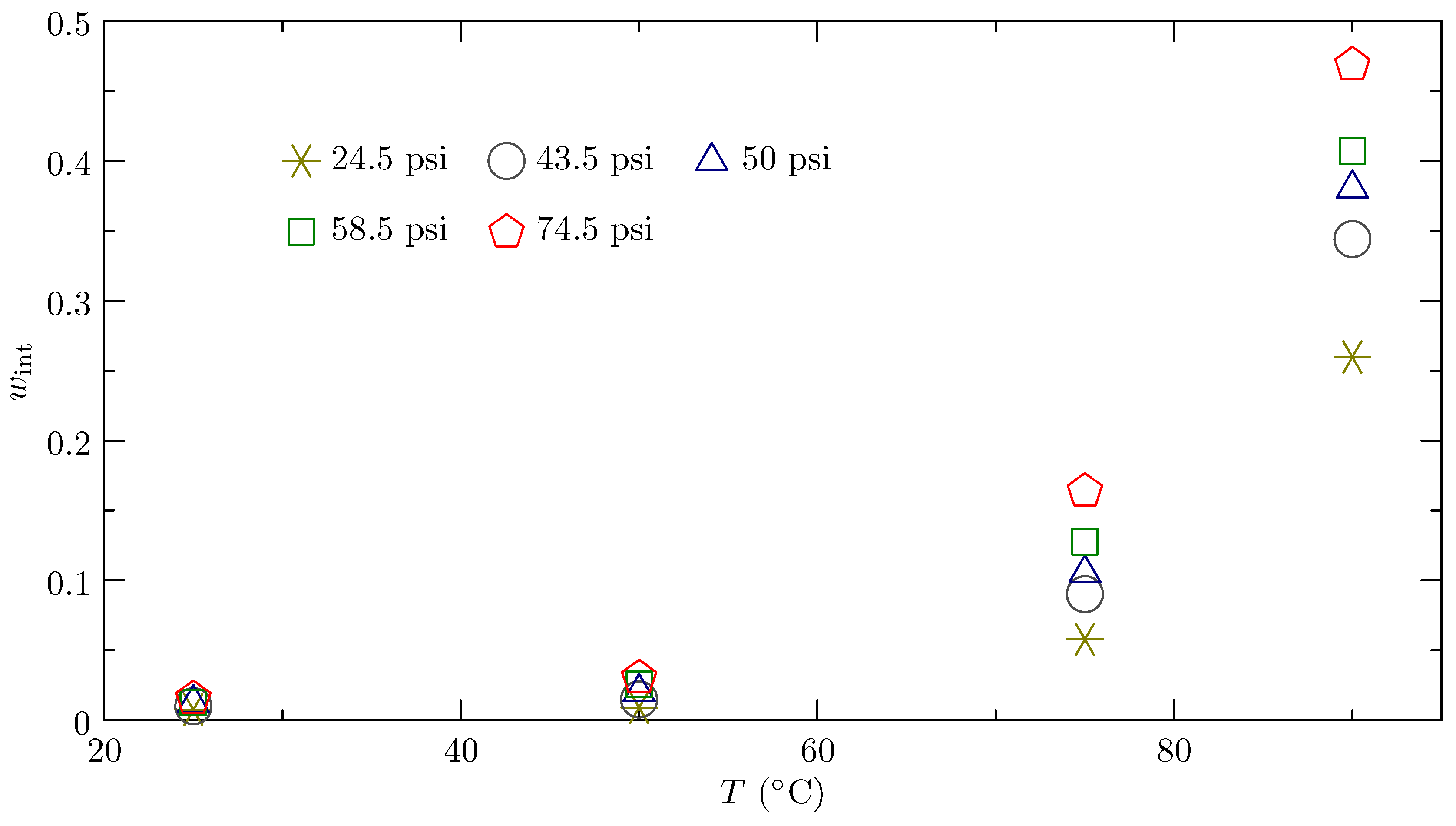
Appendix B. Dispersion Coefficient of Gas
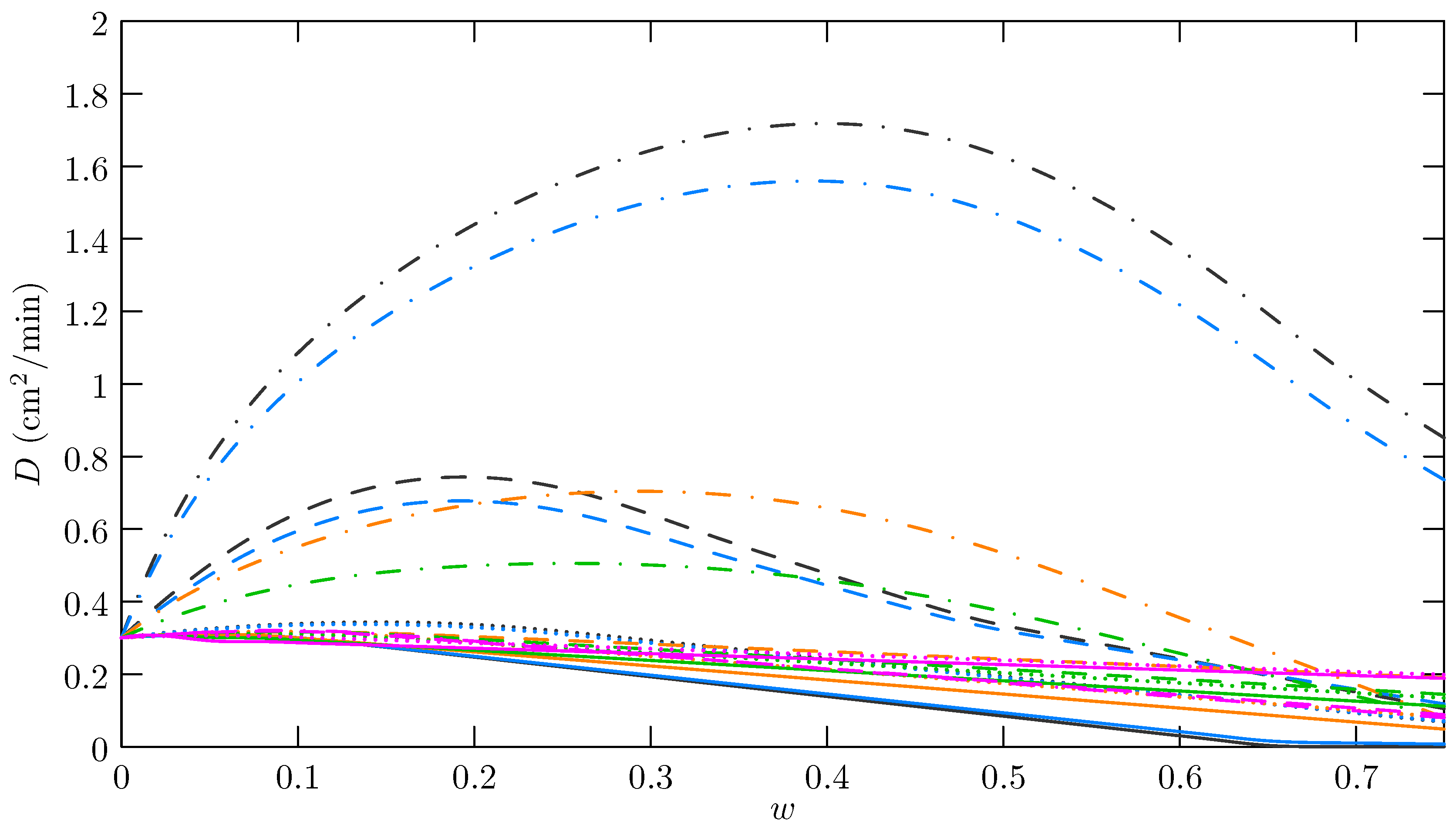

Appendix C. Heavy Oil Viscosity
| Parameter | |||||||||
| value | 0.44 | −61.19 | 2533.90 | −0.05 | −16.17 | 2950.30 | 0.15 | −7.96 | 160.00 |
Appendix D. Parameters used in Computations
| Parameter | Value |
| specific heat capacity of heavy oil () | 2.13 J g−1 °C−1 |
| diameter of the physical model (D) | 5.5 |
| gravity (g) | 35,31,600 cm min−2 |
| thermal conductivity of heavy oil (k) | 0.6 J cm−1 min−1 °C−1 |
| permeability of reservoir (K) | 4 Darcy |
| relative permeability of revervoir () | 1 |
| number of radial grid points () | 6 |
| number of axial grid points () | 6 |
| room temperatures () | 23 |
| initial height of the physical model () | 35 |
| density of heavy oil () | 0.821 g cm−3 |
References
- Diehl, M.; Bock, H.G.; Schlöder, J.P.; Findeisen, R.; Nagy, Z.; Allgöwer, F. Real-time optimization and nonlinear model predictive control of processes governed by differential-algebraic equations. J. Process Control 2002, 12, 577–585. [Google Scholar] [CrossRef]
- De Souza, G.; Odloak, D.; Zanin, A.C. Real time optimization (RTO) with model predictive control (MPC). Comput. Chem. Eng. 2010, 34, 1999–2006. [Google Scholar] [CrossRef]
- Huang, R.; Biegler, L.T.; Patwardhan, S.C. Fast offset-free nonlinear model predictive control based on moving horizon estimation. Ind. Eng. Chem. Res. 2010, 49, 7882–7890. [Google Scholar] [CrossRef]
- Adetola, V.; Guay, M. Integration of real-time optimization and model predictive control. J. Process Control 2010, 20, 125–133. [Google Scholar] [CrossRef]
- Bonvin, D.; Srinivasan, B. On the role of the necessary conditions of optimality in structuring dynamic real-time optimization schemes. Comput. Chem. Eng. 2013, 51, 172–180. [Google Scholar] [CrossRef]
- Kamaraju, V.; Srinivasan, B.; Chiu, M. NCO-tracking based control of semi-batch antisolvent crystallization processes in the presence of uncertainties. In Proceedings of the 2013 European Control Conference (ECC 2013), Zurich, Switzerland, 17–19 July 2013; pp. 3390–3395. [Google Scholar]
- Sun, M.; Chachuat, B.; Pistikopoulos, E.N. Design of multi-parametric NCO tracking controllers for linear dynamic systems. Comput. Chem. Eng. 2016, 92, 64–77. [Google Scholar] [CrossRef]
- Findeisen, R.; Allgöwer, F. Computational Delay in Nonlinear Model Predictive Control. IFAC Proc. Vol. 2004, 37, 427–432. [Google Scholar] [CrossRef]
- Wolf, I.J.; Marquardt, W. Fast NMPC schemes for regulatory and economic NMPC—A review. J. Process Control 2016, 44, 162–183. [Google Scholar] [CrossRef]
- Pesch, H. Real-time computation of feedback controls for constrained optimal control problems. Part 2: A correction method based on multiple shooting. Opt. Control Appl. Methods 1989, 10, 147–171. [Google Scholar] [CrossRef]
- Pesch, H. Real-time computation of feedback controls for constrained optimal control problems. Part 1: Neighbouring extremals. Opt. Control Appl. Methods 1989, 10, 129–145. [Google Scholar] [CrossRef]
- Domínguez, L.; Pistikopoulos, E. Recent Advances in Explicit Multiparametric Nonlinear Model Predictive Control. Indu. Eng. Chem. Res. 2011, 50, 609–619. [Google Scholar] [CrossRef]
- Aydin, E.; Bonvin, D.; Sundmacher, K. Dynamic optimization of constrained semi-batch processes using Pontryagin’s minimum principle—An effective quasi-Newton approach. Comput. Chem. Eng. 2017, 99, 135–144. [Google Scholar] [CrossRef]
- Stengel, R. Optimal Control and Estimation; Dover Publications Inc.: New York, NY, USA, 1994; Chapter 3. [Google Scholar]
- François, G.; Srinivasan, B.; Bonvin, D. Use of measurements for enforcing the necessary conditions of optimality in the presence of constraints and uncertainty. J. Process Control 2005, 15, 701–712. [Google Scholar] [CrossRef]
- Upreti, S. Optimal Control for Chemical Engineers; CRC Press: Boca Raton, FL, USA, 2013; Chapter 7. [Google Scholar]
- Lions, J. The optimal control of distributed systems. Russ. Math. Surv. 1973, 28, 13–46. [Google Scholar] [CrossRef]
- Omatu, S.; Seinfeld, J.H. Distributed Parameter Systems, Theory and Applications; Clarendon Press: Oxford, UK, 1989. [Google Scholar]
- Tröltzsch, F. Optimal Control of Partial Differential Equations: Theory, Methods, and Applications; American Mathematical Society: Providence, RI, USA, 2010; Volume 112. [Google Scholar]
- Rad, J.; Kazem, S.; Parand, K. Optimal control of a parabolic distributed parameter system via radial basis functions. Commun. Nonlinear Sci. Numer. Simul. 2014, 19, 2559–2567. [Google Scholar] [CrossRef]
- Kotsur, M. Optimal control of distributed parameter systems with application to transient thermoelectric cooling. Adv. Electr. Comput. Eng. 2015, 15, 117–123. [Google Scholar] [CrossRef]
- Alessandri, A.; Gaggero, M.; Zoppoli, R. Feedback optimal control of distributed parameter systems by using finite-dimensional approximation schemes. IEEE Trans. Neural Netw. Learn. Syst. 2012, 23, 984–996. [Google Scholar] [CrossRef]
- Nosratipour, H.; Sarani, F.; Fard, O.S.; Borzabadi, A.H. An adaptive nonmonotone truncated Newton method for optimal control of a class of parabolic distributed parameter systems. Eng. Comput. 2019. [Google Scholar] [CrossRef]
- Dutta, D. Real Time Optimal Control of Distributed-Parameter Systems. Master’s Thesis, Ryerson University, Toronto, ON, Canada, 2019. [Google Scholar]
- Aadnoy, B.S. Modern Well Design; CRC Press: Boca Raton, FL, USA, 2010. [Google Scholar]
- Booran, S. Optimal Control of Atmospheric Air Injection for Enhanced Oil Recovery. Ph.D. Thesis, Ryerson University, Toronto, ON, Canada, 2017. [Google Scholar]
- Press, W.H.; Teukolsky, S.A.; Vetterling, W.T.; Flannery, B.P. Numerical Recipes in C++: The Art of Scientific Computing; Cambridge University Press: Cambridge, UK, 2002. [Google Scholar]
- Dai, Y.H. A perfect example for the BFGS method. Math. Programm. 2013, 138, 501–530. [Google Scholar] [CrossRef]
- Muhamad, H.; Upreti, S.R.; Lohi, A.; Doan, H. Performance enhancement of VAPEX by varying the propane injection pressure with time. Energy Fuels 2012, 26, 3514–3520. [Google Scholar] [CrossRef]
- Abukhalifeh, H.; Lohi, A.; Upreti, S. A novel technique to determine concentration-dependent solvent dispersion in VAPEX. Energies 2009, 2, 851–872. [Google Scholar] [CrossRef]
- Muhamad, H.; Upreti, S.R.; Lohi, A.; Doan, H. Optimal control study to enhance oil production in labscale Vapex by varying solvent injection pressure with time. Opt. Control Appl. Methods 2016, 37, 424–440. [Google Scholar] [CrossRef]
- Abukhalifeh, H.; Upreti, S.R.; Lohi, A. Effect of drainage height on concentration-dependent propane dispersion in vapex. Can. J. Chem. Eng. 2012, 90, 336–341. [Google Scholar] [CrossRef]
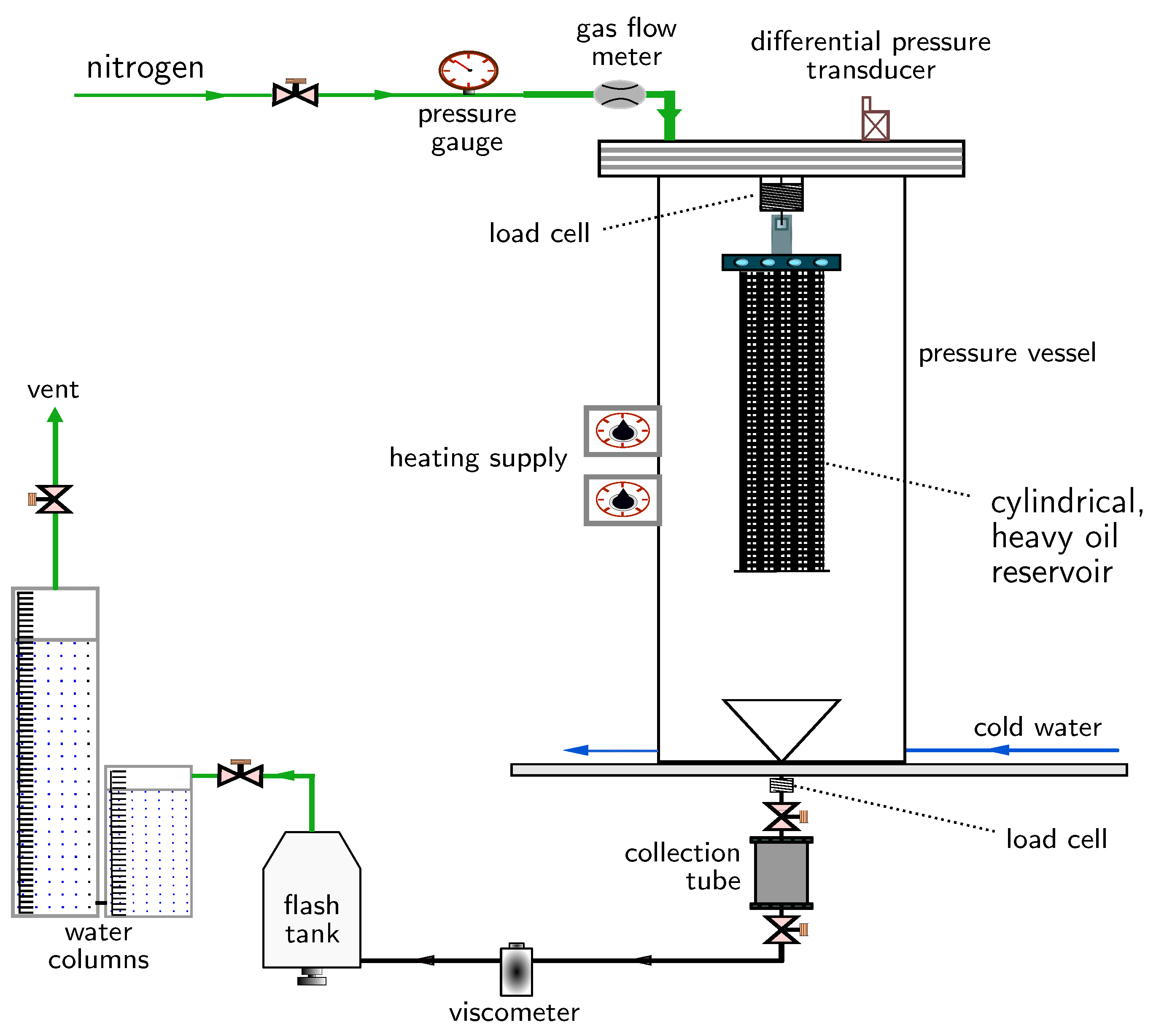

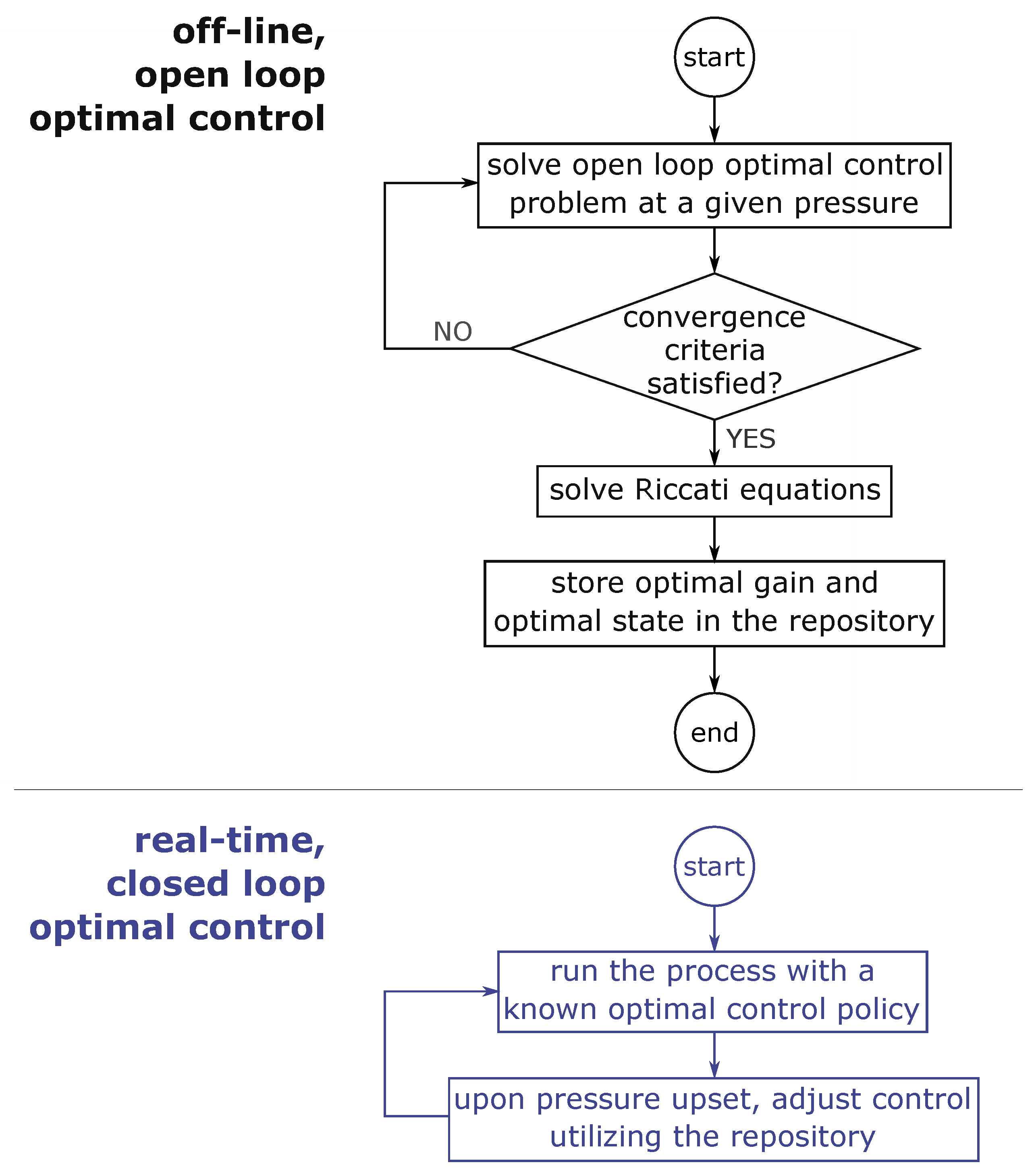
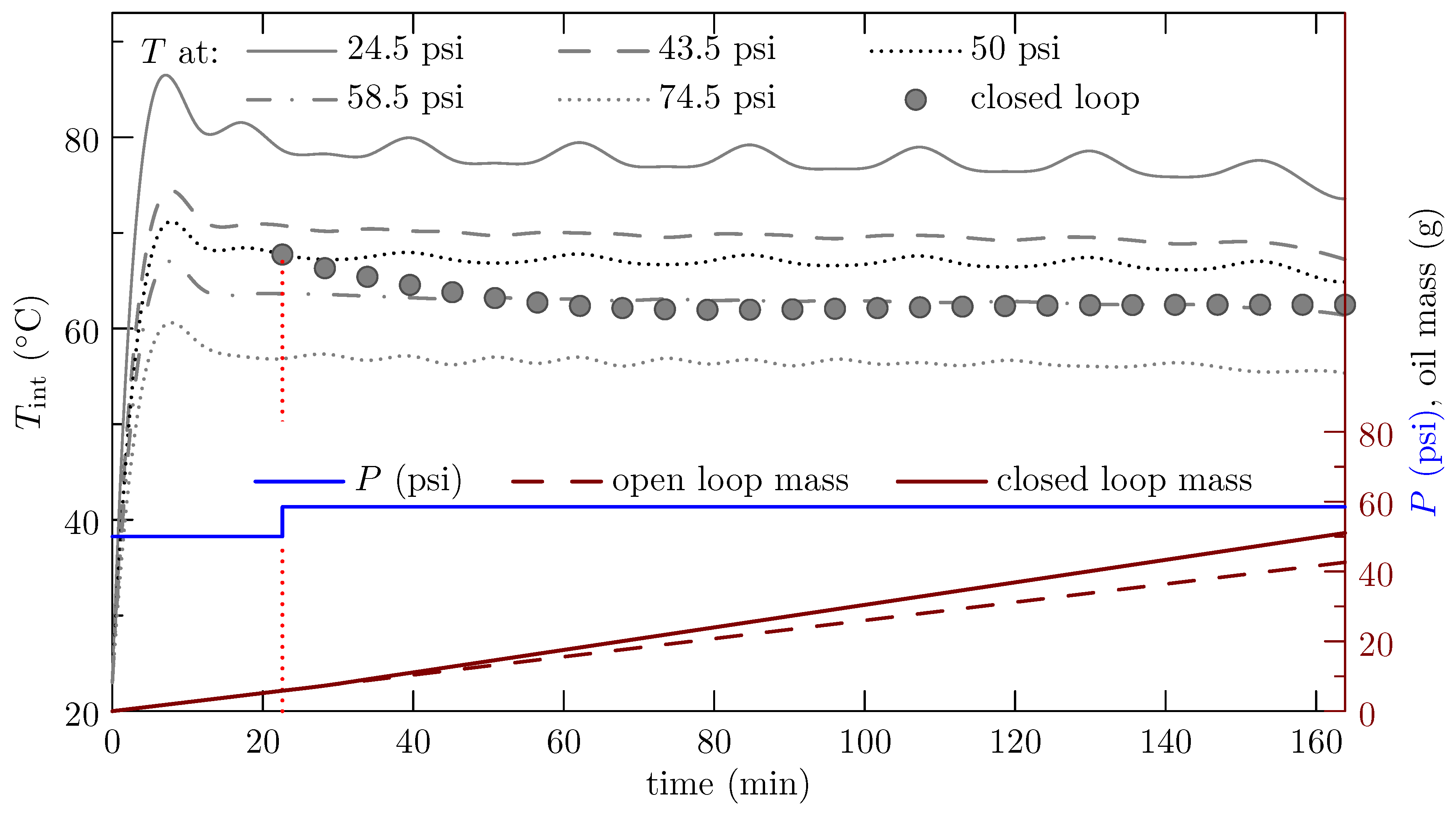
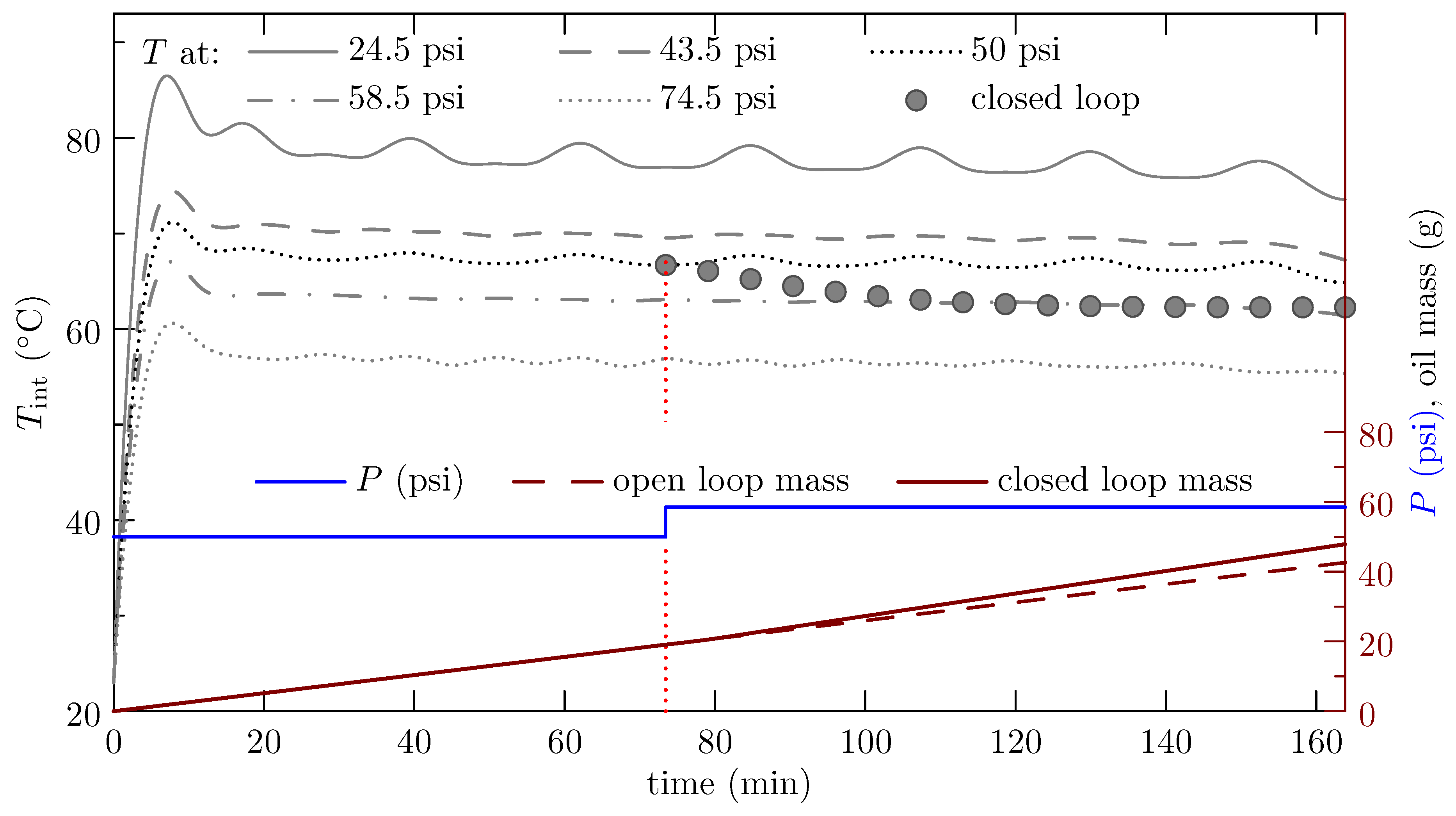

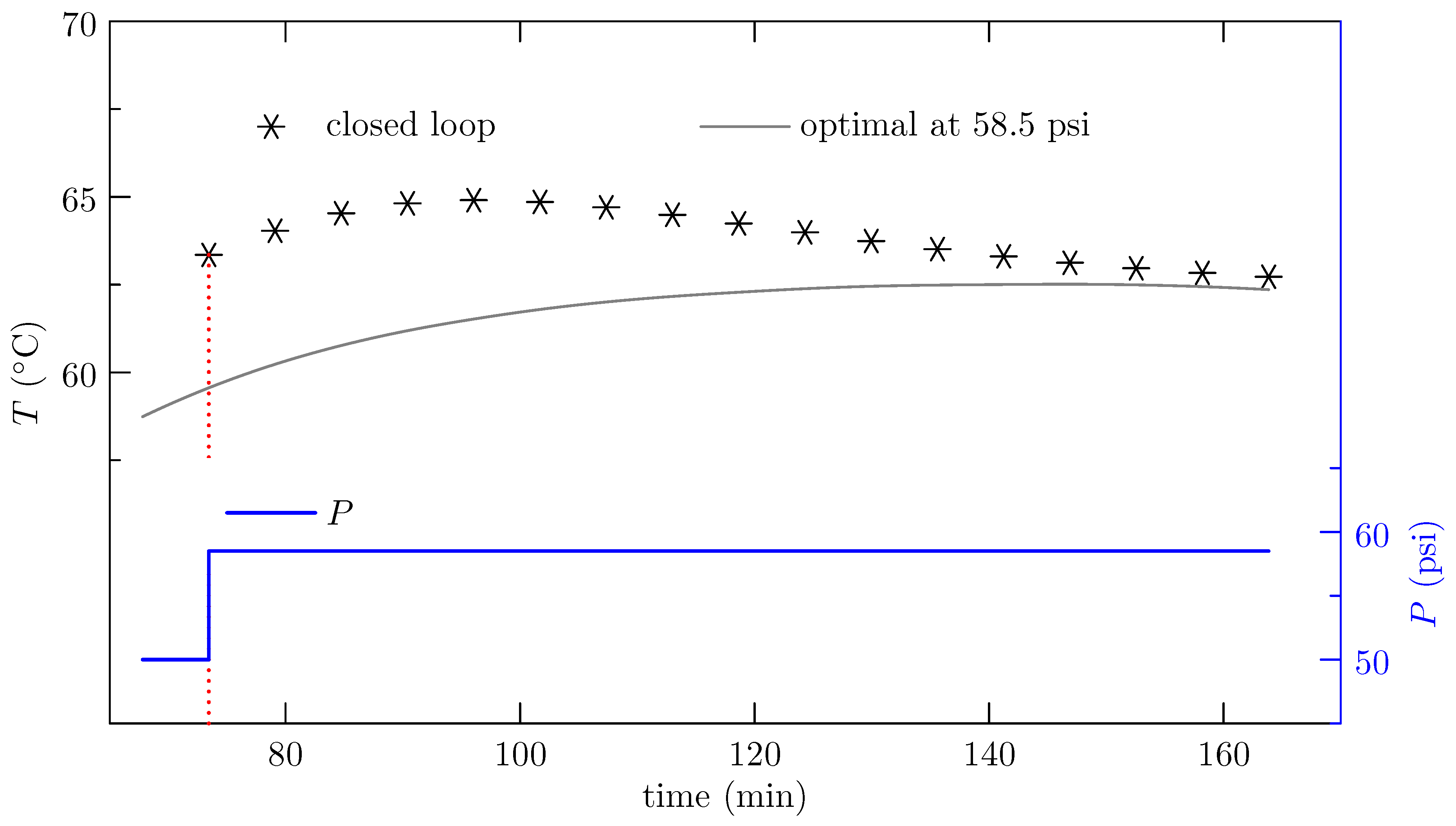

| P (psi) | Optimal I (g) | Computation Time (min) | Iterations |
|---|---|---|---|
| 24.5 | 19.3 | 20.3 | 21 |
| 43.5 | 35.0 | 18.1 | 16 |
| 50.0 | 42.6 | 18.8 | 17 |
| 58.5 | 52.8 | 23.0 | 27 |
| 74.5 | 58.3 | 21.4 | 20 |
© 2019 by the authors. Licensee MDPI, Basel, Switzerland. This article is an open access article distributed under the terms and conditions of the Creative Commons Attribution (CC BY) license (http://creativecommons.org/licenses/by/4.0/).
Share and Cite
Dutta, D.; Upreti, S.R. An Optimal Feedback Control Strategy for Nonlinear, Distributed-Parameter Processes. Processes 2019, 7, 758. https://doi.org/10.3390/pr7100758
Dutta D, Upreti SR. An Optimal Feedback Control Strategy for Nonlinear, Distributed-Parameter Processes. Processes. 2019; 7(10):758. https://doi.org/10.3390/pr7100758
Chicago/Turabian StyleDutta, Debaprasad, and Simant Ranjan Upreti. 2019. "An Optimal Feedback Control Strategy for Nonlinear, Distributed-Parameter Processes" Processes 7, no. 10: 758. https://doi.org/10.3390/pr7100758
APA StyleDutta, D., & Upreti, S. R. (2019). An Optimal Feedback Control Strategy for Nonlinear, Distributed-Parameter Processes. Processes, 7(10), 758. https://doi.org/10.3390/pr7100758





